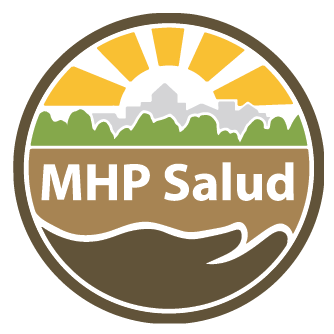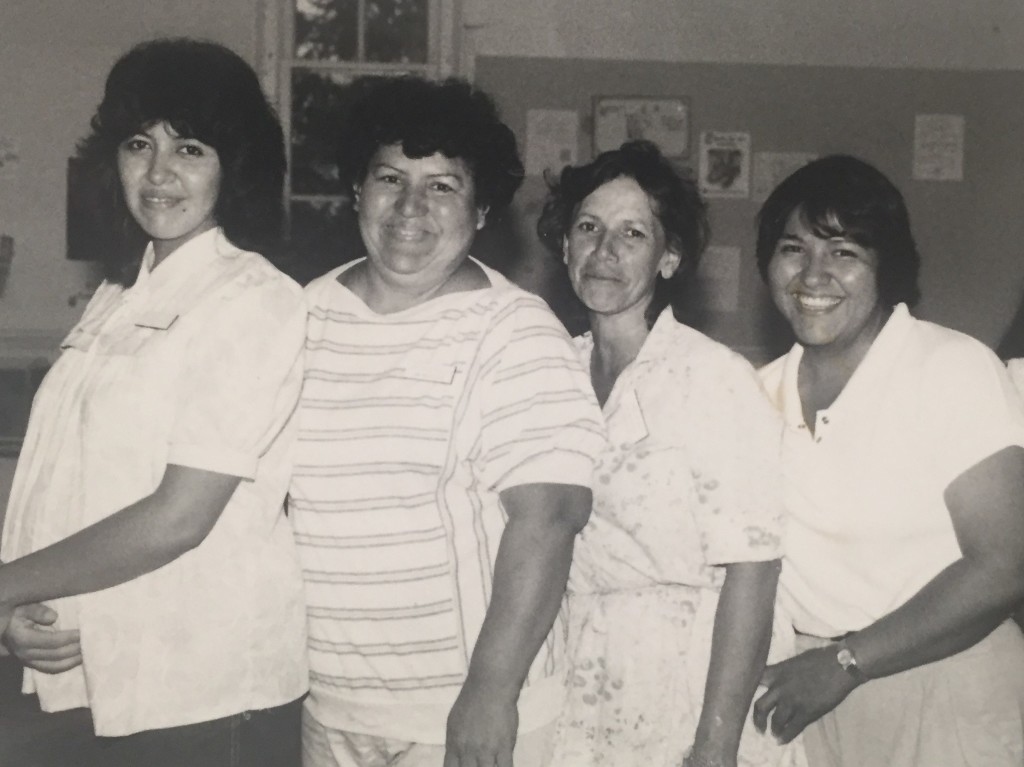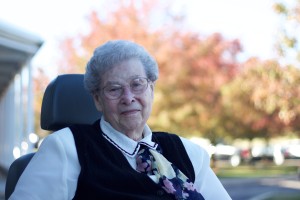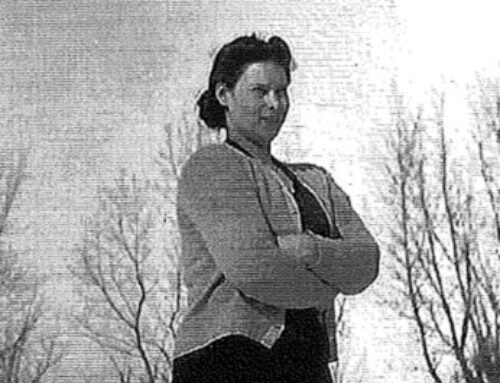Thirty-Three Years of Service: How It All Began
MHP Salud’s history is characterized by cycles of empowerment.
Three people foundational to enacting these cycles were Sisters of Mercy Mary Maurita Sengelaub and Judith Mouch and former migrant farmworker Genoveva Martinez.
From modest beginnings, they ignited thirty-three years of health programming, spanning the entire country to aide not only farmworkers in the Midwest, but underserved Latinos coast-to-coast.
Even as the organization that would become MHP Salud evolved, what never changed was a dedication to equipping those in need with the tools to improve their health and the health of their community.
In 2015, MHP Salud’s longest-serving staff member, Genoveva, completed her last year with the organization. We take this milestone to revisit these three women’s remarkable history of vision, empathy and persistence.
Sister Mary Maurita champions migrant health
Sister Maurita grew up on a farm following the Great Depression in Reed City, Michigan. She recalls her mother giving food to the travelling farmhands who would get off the train near her house.
“It influenced me to think about those that were needy,” she said, “and to be aware of ways that I could help as I was growing up.”
After becoming the first member of her family to graduate from high school in 1936, she was unsure of her next step.
“In those days, the options for women were very narrow: get married, become a teacher or become a secretary,” she said. “Even social work was not thought of as a role for women.”
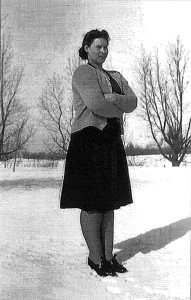
Sister Mary Maurita as a young woman, 1945
Eschewing the norms of her time, Sister Maurita found ways to help those in need. She became a nurse, ascended the ranks as a nurse educator in Bay City, Michigan and joined the Sisters of Mercy in Detroit in 1945, a community dedicated to serving the needy and poor. She graduated from college, received a master’s degree in hospital administration and became a hospital administrator at age 33.
“I was very aware of the number of Hispanic people who were working in the field all along the west side of Michigan,” she said. “Those people would go without medical care, because they were afraid to come to a hospital.”
Among several other national and international leadership positions she held over the years, Sister Maurita helped found and joined the National Migrant Worker Council, Inc., a group of religious women who supported migrant farmworker education, health care and social services.
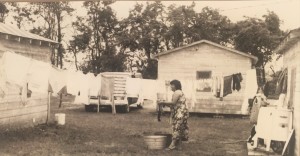
A migrant camp in Michigan in the 1970s
To better understand migrant needs, the Council traveled along the East Coast of the United States to see the conditions of the migrant camps there.
“We developed a proposal to meet some of the needs through the clinics operated by the government to serve migrant farmworkers,” she said.
The proposal was approved, and the East Coast Migrant Health Project launched in 1970 with a $131,000 grant.
“It was hard work,” she said. “This was new to the government, and the people giving the awards didn’t know exactly what to think of this group that was starting up, so we had to plead our case.”
Despite challenges, the project was approved and it spread across 13 eastern states. In 1983, the National Migrant Worker Council again received a modest sum from the U.S. Department of Health and Human Services to perform a needs assessment of migrant farmworkers in the Midwest.
“The ultimate idea was to teach the migrants as much as we possibly could about how to take care of themselves,” she said of the project.
Sister Maurita identified a fellow Sister, fresh out of a Master’s program in Ohio, to serve as executive director of the new Midwest Migrant Health Information Office (MMHIO), which would later become MHP Salud.
A needs assessment project in the Midwest evolves under Sister Judith Mouch
The new director, Sister Judith “Judy” Mouch, said her placement at MMHIO was a perfect fit.
“I always wanted to be a public health nurse, and I always wanted to work with the poor,” she said. “I’m not afraid to take risks; I like to think of different ways to change the situation.”
Sister Judy, who had little experience working with migrant farmworkers, moved to Michigan, hired a secretary and set out to collect as much information as she could about how many workers migrated through the Midwest and their health needs. Although she narrowed her focus to the state of Michigan, she soon realized the difficulty of this task.
“Once I really started to do some research, I realized that every department in the state had a different definition of ‘migrant’ and ‘farmworker,’ to say nothing of the differences between the states,” said Sister Judy.
In Michigan, instead of working with governmental departments, Sister Judy turned to the 12 clinics federally funded to serve migrants in the state. After interviewing each clinic’s director, she still instinctively felt she was not getting a full picture of the migrant life in the state.
“So I said ‘Okay, that’s fine. We can interview these people, but do you really expect that we’re going to get all the information we want?’” she said.
Eager to find more satisfying answers, she reached out to her network of pastoral workers from the Catholic diocese who were fluent in Spanish and served migrant workers. Shadowing these contacts, she toured Michigan farms to ask questions directly of the migrants about their health needs. From this experience, she learned two key things.
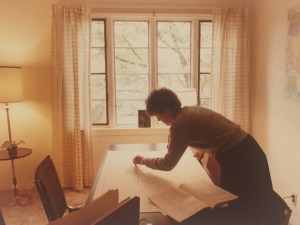
Sister Judy working in MMHIO Office in Detroit in the 1980s
One, she realized there was room for improvement in the connection between the migrant clinics’ outreach services and the actual needs of the migrants.
“Those clinics were doing the best they could,” she said. “They were providing evening hours, but if you’re providing evening hours when the sun is up until 10:30 at night and people are getting paid by the piece, they’re going to work until the last inch of sunlight goes down; they’re not going to come to the clinic.”
Secondly, she observed a strength within the migrant women she interviewed.
“Once I talked with these women in the fields, I realized that they were tough and had a lot of common sense and a passion to help one another,” she said. “So there had to be a way to capitalize on that.”
Compiling information gleaned from the migrant clinic directors, migrant social service providers and the migrants themselves, Sister Judy submitted a report to the project monitor. Meeting with him in person in Washington, D.C., she requested to use the funds leftover from the needs assessment to develop and distribute a bilingual map for migrants, detailing where they could turn for health services.
Her request approved, in the summer of 1984, Sister Judy hired another staff member to develop the map. Once complete, they distributed the maps in Texas, Arkansas and Illinois for those bound for Michigan on their migratory path.
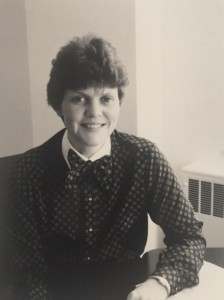
Sister Judy
Sister Judy said her role as executive director set her apart from other Sisters of Mercy interested in health care, whom she said mostly worked in hospitals.
“I never wanted to be in the hospital,” she said. “I buzzed around six states in my car.”
Over the years, the health resource map grew in popularity, and it evolved into a widely distributed book that covered all the states along the Midwest migratory “stream” from Michigan to Texas.
Keeping in mind what she had observed about the strength of the migrant women, Sister Judy knew that the next step in developing effective health programming would be utilizing the migrant camps’ greatest resource: the women.
“I realized that we couldn’t recruit health care providers to run up and down the stream,” she said. “I thought, ‘Let’s think about how to use these women.’ Dragging them into a clinic to work didn’t seem like it was going to work. So why not educate them to service the folks that are out there?”
The MMHIO was funded for a second grant, and the organization once again grew to accomplish this goal. Staff adapted David Werner’s “Village Health Worker” program model for migrant farmworkers. The result was named the “Camp Health Aide” model, in which staff train women in the camps to serve as their own community’s health educator and advocate, connecting the community’s needs with the underutilized health resources.
“I was not aware of any other Camp Health Aide program, and we just decided that was the name is should be called,” said Sister Judy. “Today, many years later, it’s not the best name, so we have ‘Promotor(a),’ which is a better fit, but back then, it was okay.”
She hired a Spanish-speaking nurse to train the Camp Health Aides, Connie Alfaro. Equipped with a curriculum and the right staff, the MMHIO was ready to start implementing the first Camp Health Aide programs.
The agency set up the first program in Bangor, Michigan, on the state’s west side, which was home to the largest clinic in the state. Connie set up shop and trained the five or six women who would become the first Camp Health Aides. Though they were slow to accept the concept of the model at first, the clinic’s staff soon realized the Camp Health Aides could promote the clinic’s services to the camps and funnel new patients in for services.
“It worked great,” said Sister Judy. “Somebody had to pave the way, and we paved it.”
With the organization set up to meet the challenges originally identified in the needs assessment, Sister Judy stepped down as executive director in 1986. The new director, Leslie Carol, brought on Sister Donna Zetah, who had returned from service in Central America.
“Donna made such good friends and had such a trusting relationship with the Camp Health Aides,” said Sister Judy. “She also found Genoveva, and she convinced her that she could do more than she ever thought she could do.”
Southern expansion with Genoveva Martinez
Genoveva Martinez had been travelling as a migrant farmworker since childhood. In 1985, she was recruited and trained as a part-time Camp Health Aide on top of full-time farmwork.
“My first few years were all about learning for myself. I learned a lot, especially reading nutrition labels and that type of thing,” she said. “You never think about it when you’re a migrant farmworker, because you’re always busy.”
With the training from the MMHIO, Genoveva was equipped to begin spreading her newfound health consciousness to others who lived in her camp. She decided to create a cleaning schedule for the camp’s families to manage the shared restrooms and the trash receptacle (Genoveva published this and other memories last year in The Journal of Ambulatory Care Management).
“Little changes like that came about, and for me that was really good that we had that in place, because we lived there,” said Genoveva.
As the Camp Health Aides like Genoveva spent a few summers promoting health in their camps in Michigan, they spoke to their supervisors about expanding the program to Texas, where they migrated each winter.
“The Camp Health Aides started saying ‘We know what we’re doing, and we can do it up here, but we need something down there, too,’” said Sister Judy.
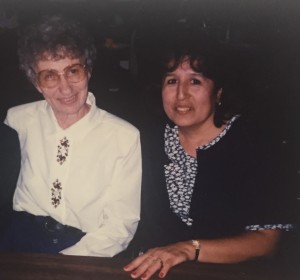
Genoveva and Sister Donna
Sister Donna moved down to Texas in 1987 along with some Camp Health Aides (called Promotores(as) de Salud in the south) where she helped establish Promotor(a) programs in Texas’ Rio Grande Valley. She brought with her a list of addresses she had collected up north from the people who were migrating to Texas, and she went door-to-door to recruit participants for the health programs.
“We started gathering groups and connecting with the services that were provided here for the low income,” said Genoveva.
One of these was Holy Family Birthing Center, where the Promotoras received training on prenatal care from the Center’s midwives. Apart from gathering for classes, the Texas staff worked from their cars and restaurants, piecing together programs on the go.
“I have to say that Sister Donna was my inspiration, because she was an older lady, but she never stopped!” said Genoveva. “We called her the flying nun, because she would be back and forth from one end of the valley to another.”
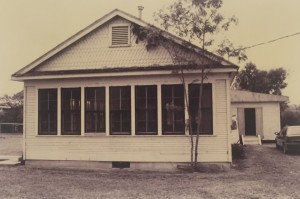
Relampago Office in 1993
In 1990, the MMHIO received the funds to establish an office in Relampago, Texas, from which the growing programming got a home base. After four or five years, Genoveva was promoted, and she and another Co-Coordinator took over operations in Texas from Sister Donna, who returned to Central America. Genoveva settled in Texas and started working full-time for the MMHIO, where she continued Sister Donna’s work of recruiting and setting up the Promotores(as) in the schools and in the clinics and arranging training for them from various health providers in the area. In this role, Genoveva saw her abilities grow.
“We had one computer in the office, but we were all scared of it,” said Genoveva. “Like, ‘I don’t want to touch that computer! I don’t even know what’s in it!’”
She said she and the rest of the staff overcame their fears and started using the computer, and little by little, she realized she was good at using it.
As the MMHIO became more embedded in the community, new funding opportunities to tackle diverse health issues cropped up, and the organization broadened its programming capacity, changing its name to Migrant Health Promotion in 1997. As the programming capacity broadened, so did the capacity of the Promotores(as).
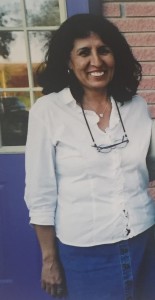
Genoveva
“They wanted to go out there and make a difference. They were organizers,” said Genoveva. “So we were out in the community, and the community responded really well.”
She says the Promotores(as) were always looking for more opportunities to learn about health, but also other skills to empower their work.
“They really wanted to learn,” said Genoveva. “I remember that some of them would even ask me, ‘How can I go back to school? How can I learn English?’”
She remembers a Promotora named Luz that she supervised on a diabetes outreach program. Very timid, Luz had never learned to drive. Genoveva says through the training Luz received as a Promotora, she found the confidence to learn to drive and speak in front of people.
“She was driving all the way to San Antonio,” said Genoveva. “She would always be out there doing her sessions, and without even thinking about it, she became one of the best Promotoras I had ever seen or known.”
The evolution of empowerment continues
With steady growth, and a new name to embody its broader programmatic reach, MHP Salud has run 72 Promotor(a) programs for Latinos, spanning 49 health topics from prenatal care to fall prevention for the elderly. These programs have taken place in 39 states with support from more than 40 funding partners. The organizations has also trained dozens of health providers to integrate the model into their services. Each of those programs represents a cycle of empowerment from the program’s creators down through its staff and the communities it educates.
Looking back, Sister Judy, who remains on MHP Salud’s Board of Director today, is proud of this evolution.
“We’ve gone from providing service to individuals at the level of their need to providing service and influencing those that are providing the service now,” she said.
Sister Maurita, now well into her 90s and inducted into the Modern Healthcare Hall of Fame, says she credits her 60-year legacy to the diversity of the people with whom she worked over the years.
“If there is a need to be addressed and you want to do something about it, you can,” she said. “You have to have a few dreamers in the group, but you also need to have some honest-to-goodness ‘doers’ who can take the dream and work out the nuts and bolts on paper and make it happen.”
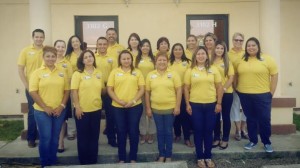
MHP Salud Texas Staff, 2015
